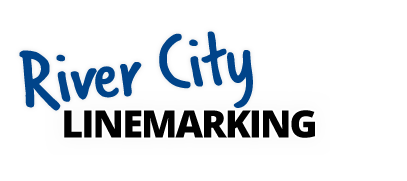Line marking is an important part of any roadway or parking lot. These lines and markings help to provide guidance and direction for drivers, as well as pedestrians. There are a number of different line marking services and materials that can be used, each with its own benefits. Before selecting a material, it’s important to consider the climate and traffic volume in the area. asphalt contractors can help you choose the right material for your needs.
The team here at River City Linemarking have outlined the basics of what you need to know about line marking and how to choose the right option for you:
1. What is line marking and what is it used for?
Line marking is a type of user-friendly branding that is applied to pavements, roads, and pathways. It often contains directional signage to guide people where they need to go. The line-markings are most commonly seen on footpaths, but they can also be used in car parks or any other accessible space. They are common practice in organisations where navigation may not be possible without them. For example, shopping centres, business complexes, and locations with limited street signage may utilise line marking as a means of guiding visitors around the area.
There are many reasons for applying line markings, but its most common application is to reduce the risk of accidents occurring in high-traffic areas.
Line marking is generally made from different types of paint which are applied directly onto the floor or road surface. The design, colours, and layout may be selected by the organisation that intends to apply them, but it’s important to consider factors such as weather conditions which can affect their effectiveness. Line markings are designed so they will last and not fade over time when exposed to direct sunlight or rain/moisture. This ensures they remain visible for longer periods of time so people can see where they need to go easily.
2. How to choose the right type of line marking for your needs?
Line markings are commonly used by tenants of commercial property, clients and customers visiting business complexes, shoppers at retail centres, or anyone simply looking for directions to an area. The design which is selected should ideally be something that sets the organisation apart from its competitors (if applicable) while also containing vital information on how to get where they need to go. For example, some buildings may contain multiple entrances which service different tenant spaces on various levels. It may then be necessary to apply signage on each floor that shows where specific areas are located in relation to them so people can enter safely without any issues arising.
Although line marking is not always required, it’s important to know your options before agreeing on whether you want them or not. You must consider factors such as safety, cost, and time constraints. You should also consider how often you anticipate people using the area in question. For example, areas that are likely to be used frequently may benefit from line-markings while spaces that are less active may not need them. It’s important to always seek expert advice when applying line markings so they can provide you with detailed information on what is suitable for your needs.
3. When do you need line marking applied?
Line markings are generally applied by organisations who wish to inform visitors about where certain buildings or facilities are situated without having to engage them in conversation directly. This can make them an effective choice if multiple entrances exist but it’s simply not possible to tell people verbally where they need to go. People wanting directions will then be able to follow the line markings until they reach their destination without any issues arising.
Line markings can also benefit organisations by developing a positive image of the company in question, particularly if they are made using very aesthetically pleasing designs. Moreover, tenants of a commercial property may wish to display line marking inside their building which informs visitors where various spaces are located so people can get what they need without having to interrupt them. This makes for more efficient use of time and resources which is beneficial in business settings where everything needs to run smoothly at all times.
4. The benefits of line marking
There are numerous benefits to using line markings as they can provide a more efficient service as well as make people’s lives easier. For example, using line marking inside buildings allows tenants and employees alike to be able to navigate from one area to another without any assistance. This can therefore save both time and money for everyone involved as it means that customers don’t need to interrupt people who may be attending clients or working on a project if they have questions or need directions.
Line-markings also benefit organisations by improving the reputation of the building/business complex in question. For instance, if a company is applying them on entry points within their own premises then this immediately builds trust between them and visitors which creates positive word-of-mouth advertising about the business which is effective for generating new customers.
Finding the right line marking solution for you and your business can be a difficult process, and the team at River City Linemarking are here to help you along the way. Get in touch with us today and we can get started on your line marking project.

